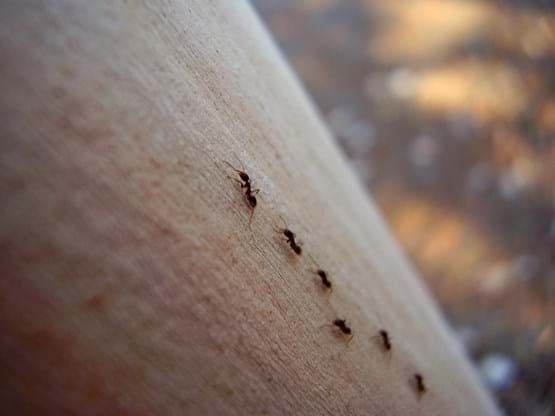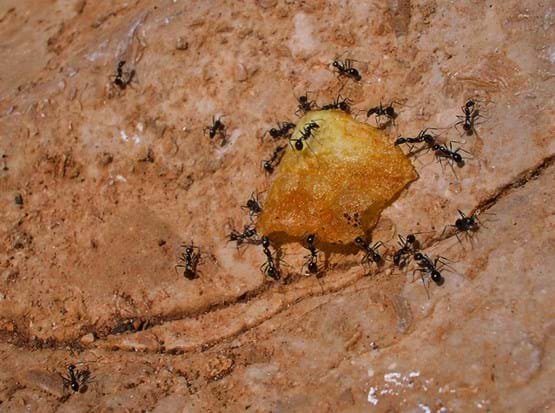Controlling Ants In Your House
There are several species of small ants that are frequent invaders in Idaho homes. Although they can be pests, ants provide an important ecological cleansing and fertilization service. They kill and eat many pest insects, aerate the soil, and recycle dead animal and vegetable material. Because of these beneficial aspects, it is undesirable (and probably downright impossible) to eliminate ants from their outside habitat. The best approach to ant management is to try to keep them outdoors.
Detection
Look for individual “scouts” or long lines of ants in or around the house near food or water. Carpenter ants are distinguished from other ants by size. Carpenter ants are 1/4” or larger, and are considered as structural destroying pests. Because these require different management techniques from those listed below, you may want to contact a professional pest control operator for assistance.

Less-Toxic Controls
To keep these unwanted pests from inside your home, here are several, less-toxic approaches you can take.
Inside Your Home
Kill the scouts so they can’t call in the hordes when they find a tasty tidbit. A good technique for this is to vacuum them; the dust in the bag will desiccate them.
Use ant baits because they use a minimum of insecticide and confine it to a very small area (see “Tips for Using Ant Baits”).
Use insecticidal dusts such as diatomaceous earth (DE) in wall voids and cracks before they are sealed. Follow label instructions for application.
After declines in the ant population is noticed, clean up all food sources and fix leaky water systems. Note - If this is done prior to control actions it may disperse the pest ant population into a larger area.
Outside Your Home
Use sticky barriers around the trunk of a tree or bush to prevent ants from protecting aphids and other “honeydew”- producing insects. Prune any branches that touch walls, fences, utility wires or the ground so ants cannot find alternate routes onto the plant.
Ant Baits. If you can find the spot outside where ants are entering the building (this is often difficult to do), place bait there; otherwise use baits only inside. Outside, rain and sprinklers can wash baits away, and you may end up attracting ants to your house. Many types of bait come in small bait stations that can be secured in outof-the-way locations (under rocks, boards, etc.) but accessible by the ants.
Remove food items such as dog food so they will not be in competition with the baits. Remove water sources and harborage materials once control efforts take effect.

Prevention
There are several, easy steps you can take in your home to keep ants away and remove any incentives for them to return.
Store food in containers that seal tightly or in the refrigerator when you notice ant activity.
Keep things clean and dry and fix leaking faucets and pipes (ants need food and water).
Caulk cracks where ants are entering the house. Weather-strip doors and windows.
Tips for Using Ant Baits
Ant baits contain a pesticide mixed with an attractive food substance. Ants take small quantities of bait back to their nest to share with their nest mates. In this way the entire nest can sometimes be eliminated.
- Use baits with boric acid, hydramethylnon, or fipronil, as an active ingredient.
- Keep several different baits on hand because ants may change their food preferences frequently. If the bait is not working, try another. Wait at least a day to see if they are consuming the bait.
- Use baits primarily inside (long term use outside may attract more ants to the house and rain and sprinklers may destroy or wash away bait).
- Do not spray insecticide around the bait; it will repel the ants.
- When ants are gone, remove the bait so you don’t attract more ants. If the bait you are using comes enclosed in a bait station, return it to its original box to save and use again. Put the box inside a plastic bag and seal it.
- If ant problem is persistent you may wish to seek professional assistance.

For more information, and to keep this available in your home, you can download the full PDF.